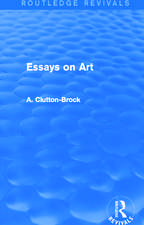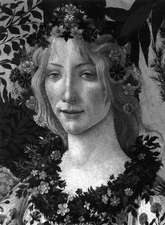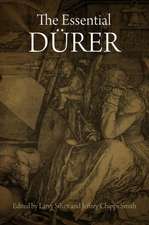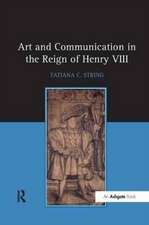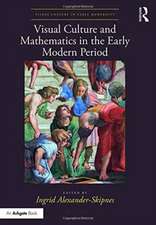Rubens, Velázquez, and the King of Spain
Autor Aneta Georgievska-Shine, Larry Silveren Limba Engleză Paperback – 11 noi 2016
| Toate formatele și edițiile | Preț | Express |
|---|---|---|
| Paperback (1) | 489.26 lei 6-8 săpt. | |
| Taylor & Francis – 11 noi 2016 | 489.26 lei 6-8 săpt. | |
| Hardback (1) | 830.51 lei 6-8 săpt. | |
| Taylor & Francis – 26 feb 2014 | 830.51 lei 6-8 săpt. |
Preț: 489.26 lei
Nou
Puncte Express: 734
Preț estimativ în valută:
93.62€ • 97.99$ • 77.92£
93.62€ • 97.99$ • 77.92£
Carte tipărită la comandă
Livrare economică 31 martie-14 aprilie
Preluare comenzi: 021 569.72.76
Specificații
ISBN-13: 9781138251649
ISBN-10: 113825164X
Pagini: 320
Dimensiuni: 174 x 246 x 26 mm
Greutate: 0.45 kg
Ediția:1
Editura: Taylor & Francis
Colecția Routledge
Locul publicării:Oxford, United Kingdom
ISBN-10: 113825164X
Pagini: 320
Dimensiuni: 174 x 246 x 26 mm
Greutate: 0.45 kg
Ediția:1
Editura: Taylor & Francis
Colecția Routledge
Locul publicării:Oxford, United Kingdom
Notă biografică
Larry Silver is Farquhar Professor of Art History at the University of Pennsylvania, USA. He is a past President of the College Art Association and past Editor in Chief of caa.reviews. He has published numerous books, most recently Pieter Bruegel (2011) and The Essential Dürer (2010).
Aneta Georgievska-Shine is a lecturer in the Departments of Art History and Fine Arts at the University of Maryland, College Park, USA. She is also the author of Rubens and the Archaeology of Myth, 1610-1620 (Ashgate, 2009).
Aneta Georgievska-Shine is a lecturer in the Departments of Art History and Fine Arts at the University of Maryland, College Park, USA. She is also the author of Rubens and the Archaeology of Myth, 1610-1620 (Ashgate, 2009).
Recenzii
'This ambitious study deals with two of the most complex artists of the seventeenth century, who, moreover, represent two different artistic traditions. Habsburg myth making, the emblematic tradition, the mythographic tradition, and innumerable ancient texts are adduced by the authors to build a set of associative meanings around the mythological paintings created for the Torre de la Parada. The authors treat intention and reception with subtlety and deftness, and offer up a rich range of possible meanings for this intriguing pictorial ensemble.' Giles Knox, Indiana University, USA
'In this ambitious book, Aneta Georgievska-Shine and Larry Silver vividly portray Rubens' mythological protagonists not as heroic role models, but as sympathetic figures of flesh and blood. Drawing on Spanish and Netherlandish examples and literary sources, the authors convincingly show that the Torre paintings served both to delight viewers and to propagate the mythic origins and political ambitions of the Spanish Habsburgs. Learned, original and well argued, this study does justice to the complexity of mythological painting in the context of the seventeenth-century Spanish court.' Anna C. Knaap, Emmanuel College, USA
'... the authors have fashioned an encomium of Rubens's intellect and imagination that will give students much to think about.' The Art Newspaper
'... the full-length study by Aneta Georgievska-Shine and Larry Silver is most welcome because it takes Rubens’s and Velázquez’s relationship as its fulcrum. In examining this artistic dialogue within and beyond the Torre cycle, the authors compellingly attend to how these artists’ exchanges produced not only an ambitious painting cycle but also a court audience ready to embrace these paintings.' Historian of Netherlandish Art Review of Books
'... excellent book ...’ Renaissance Quarterly
'Georgievska-Shine and Silver provide a compelling framework for interpreting the artistic contributions of Rubens and Velázquez to the Torre de la Parada. Sited as a locus of exchange between two eminent painters, the hunting lodge takes on renewed significance in their study, rewarding readers with an enriched understanding of its pictorial ensemble, and—significantly—of the conversation with Rubens that was to resound in Velázquez’s works. This elegant analysis is further proof that we gain deeper knowledge of artistic production in seventeenth-century Spain by situating it in dialogue with a wider European context.' CAA Reviews
'In this ambitious book, Aneta Georgievska-Shine and Larry Silver vividly portray Rubens' mythological protagonists not as heroic role models, but as sympathetic figures of flesh and blood. Drawing on Spanish and Netherlandish examples and literary sources, the authors convincingly show that the Torre paintings served both to delight viewers and to propagate the mythic origins and political ambitions of the Spanish Habsburgs. Learned, original and well argued, this study does justice to the complexity of mythological painting in the context of the seventeenth-century Spanish court.' Anna C. Knaap, Emmanuel College, USA
'... the authors have fashioned an encomium of Rubens's intellect and imagination that will give students much to think about.' The Art Newspaper
'... the full-length study by Aneta Georgievska-Shine and Larry Silver is most welcome because it takes Rubens’s and Velázquez’s relationship as its fulcrum. In examining this artistic dialogue within and beyond the Torre cycle, the authors compellingly attend to how these artists’ exchanges produced not only an ambitious painting cycle but also a court audience ready to embrace these paintings.' Historian of Netherlandish Art Review of Books
'... excellent book ...’ Renaissance Quarterly
'Georgievska-Shine and Silver provide a compelling framework for interpreting the artistic contributions of Rubens and Velázquez to the Torre de la Parada. Sited as a locus of exchange between two eminent painters, the hunting lodge takes on renewed significance in their study, rewarding readers with an enriched understanding of its pictorial ensemble, and—significantly—of the conversation with Rubens that was to resound in Velázquez’s works. This elegant analysis is further proof that we gain deeper knowledge of artistic production in seventeenth-century Spain by situating it in dialogue with a wider European context.' CAA Reviews
Descriere
Analyzing the decorative mythological imagery of the hunting lodge of King Philip IV of Spain, this study illuminates the dialogical nature of a painted program, designed largely by Peter Paul Rubens, and supplemented by Diego Velázquez. Careful examination of surviving images in their broader intellectual context reveals their literary, rhetorical, and philosophical underpinnings, and elucidates the complementary perspectives of these two great artists.



